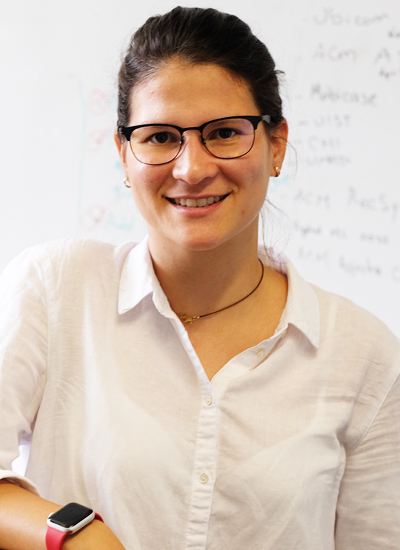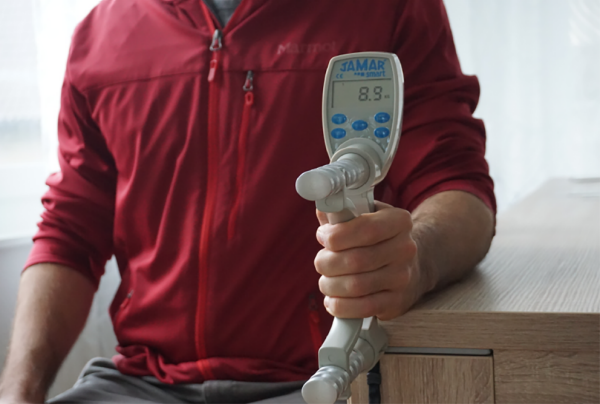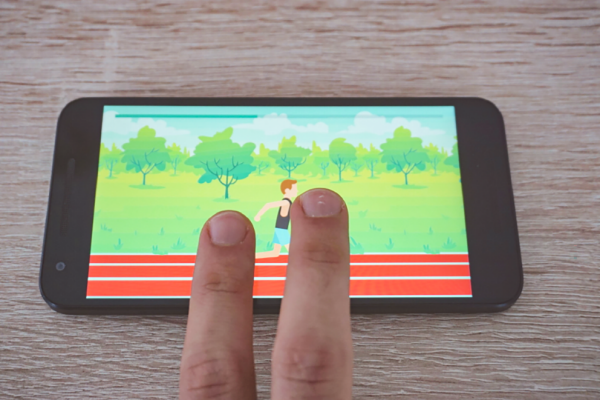“This is a step forward in our quest to understand fatigue”
18.05.2020 | Katharina Emry
The majority of multiple sclerosis patients consider fatigue the single most wearing symptom. And yet, fatigue is still poorly understood. Doctoral student Liliana Barrios wants to change that by introducing smartphone-based methods enabling patients to measure their motor fatigability remotely and more frequently.

Your research interest lies at the intersection of mobile health, machine learning and human-computer interaction. Why is that?
I am interested in investigating how we can use technology (e.g. smartphones and wearables) to better understand medical conditions, in particular chronic conditions such as multiple sclerosis (MS). To date, our understanding of chronic conditions is based on short-term or even single time-point measurements conducted in standard clinical environments by trained personnel using specialised equipment. These assessments are expensive and time-consuming and can therefore not be conducted very often. Even though they allow us to understand specific processes that are happening in the body, they only give us a snapshot of the patient. Chronic conditions are, by definition, present in patients’ lives all the time. I believe that combining mobile health, machine learning and human-computer interaction enables us to better understand chronic conditions. How? Thanks to continuous monitoring and developing new assessment tasks that can be performed remotely and more frequently.
"I believe that combining mobile health, machine learning and human-computer interaction enables us to better understand chronic conditions."Liliana Barrios
One of your research projects focuses on measuring motor fatigability in MS patients. Why is motor fatigability particularly relevant?
General fatigue is a common debilitating symptom of many autoimmune diseases, including MS. Up to 90 percent of MS patients complain of fatigue, and many say that it is their most disabling symptom. Despite its high prevalence, fatigue is still poorly understood. The subjective nature of fatigue makes its quantification challenging. Nowadays, we rely mainly on questionnaires to assess fatigue. These questionnaires are subjective and ask patients to make a retrospective analysis, which can introduce recall bias. Motor fatigability is the objective decline of performance during a motor task. Researchers have suggested that there is a link between motor fatigability and subjective fatigue. However, some results are inconclusive. The main limitation is that studies use different approaches to quantify motor fatigability.


How has motor fatigability been measured so far? And what is your novel approach?
Most commonly, motor fatigability is measured by using specialised devices, namely hand or knee dynamometers. These devices measure strength decline over time and require patient supervision. We introduced a novel and ubiquitous smartphone-based technique that is intended to allow patients to measure their motor fatigability independently: “Rapid Alternating Finger Tapping”. We believe this a step forward in our quest to measure and understand fatigue.
How does “Rapid Alternating Finger Tapping” work?
First, the smartphone has to be placed horizontally on top of a hard surface (e.g. a table). Then, we ask patients to perform a rapid alternating finger tap on the smartphone screen using their index and middle finger while their hand is resting on the surface of the table. The goal is to keep tapping as fast as possible for 30 seconds. Within these 30 seconds, an objective decline in performance can be measured by analysing the touch duration of each finger tap. As time progresses and the subject’s performance decreases, the average touch duration increases.
"I am very keen on using wearable devices to understand chronic conditions."Liliana Barrios
What challenges did you run into while developing your app?
One challenge was to determine the right duration for the tapping task to correctly identify motor fatigability. We started with a first set of healthy participants to find out how soon their performance declined. Performing roughly 3,000 taps was tough on them but helped us realise that performing 500 taps was sufficient to measure motor fatigability. A second challenge was to figure out the maximum tapping duration for MS patients. Through testing and feedback from the patients, we were able to set the duration of our tapping task to 30 seconds.
Your smartphone-based approach resulted from a collaboration between the Department of Computer Science at ETH Zurich, the University of Zurich and the University Hospital Zurich. Can you tell us more about that collaboration?
We work very closely with Professor Andreas Lutterotti from the University of Zurich and his team, who focus on experimental research therapies for MS patients. It’s a win-win situation: I am very keen on using wearable devices to understand chronic conditions and Professor Lutterotti was very open to collaborating with us.
What is the next step in your research into motor fatigability?
First, we still need to evaluate whether our smartphone-based technique also works without patient supervision. Second, we would also like to improve our understanding of cognitive fatigability. And third, we are looking forward to investigating further aspects of fatigue.
Do you think your approach towards measuring motor fatigability in MS patients could be applied in other areas as well?
Yes, of course. I think it can be applied to patients with chronic conditions in general, or patients suffering from chronic fatigue or cancer-related fatigue.